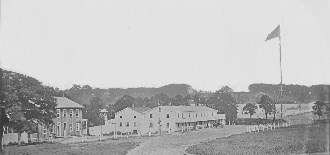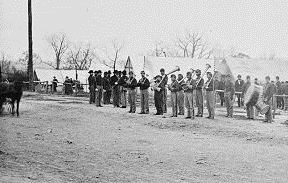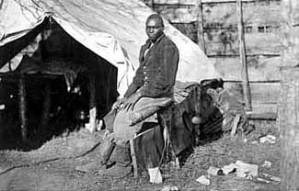
Shepherd Parkway during the American Civil War, 1860-1865 
The U.S. National Archives and Records Administration Fort Carroll and Fort Greble Fort Greble was named in honor of Lieutenant John T. Greble who was killed at the battle of Big Bethel on July 10, 1861. The fort was an irregular, 327 yard perimeter earthwork structure that occupied the southern end of the ridge in Shepherd Parkway. In conjunction with forts in Alexandria, VA the fort protected the Potomac River. Its guns commanded the ravines along Oxen Run and Piscataway Road (now called Martin Luther King Avenue), which headed downtown. Most Sunday mornings a parade of soldiers could be seen marching from Ft. Greble to the Regimental Headquarters at Ft. Carroll for religious services. 
The U.S. National Archives and Records Administration Although these forts never saw any major action, Robert E. Lee and his Confederate Army of Northern Virginia were aware of their strength, this is perhaps why General Jubal Early decided to attack from the north in 1864 in the battle of Ft. Stevens. They did however provide training ground for soldiers preparing for combat. As the war progressed fugitive slaves sought refuge and entered the city's boundaries providing an available labor force to help finish and then maintain the forts. These fugitive slaves were referred to as contraband. Contrabands who worked for the forts created camps nearby. Through a loop-hole method the Federal Government could maintain their status in the Union by considering them as "contraband of war". When the Thirteenth Amendment, which outlaws slavery, was enacted and former slaves were granted freedom many of them stayed nearby. By the end of the nineteenth century the area had become home to many African Americans communities.
Explore more: Shepherd Parkway | Early History | Colonial Era | Civil War | Postbellum
|
Last updated: August 31, 2017
